
The Vatican Museums are the public museums of Vatican City, enclave of Rome. They display works from the immense collection amassed by the Catholic Church and the papacy throughout the centuries, including several of the most well-known Roman sculptures and most important masterpieces of Renaissance art in the world. The museums contain roughly 70,000 works, of which 20,000 are on display, and currently employs 640 people who work in 40 different administrative, scholarly, and restoration departments.

Jo Davidson was an American sculptor. Although he specialized in realistic, intense portrait busts, Davidson did not require his subjects to formally pose for him; rather, he observed and spoke with them. He worked primarily with clay, while the final products were typically cast in terra-cotta or bronze, or carved from marble.

Rembrandt Bugatti was an Italian sculptor, known primarily for his bronze sculptures of wildlife subjects. During World War I, he volunteered for paramedical work at a military hospital in Antwerp, an experience that triggered in Bugatti the onset of depression, aggravated by financial problems, which eventually caused him to commit suicide on 8 January 1916 in Paris, France when he was 31 years old.
Baron Avro Manhattan was an Italian writer, historian, poet and artist. A born aristocrat who wrote about various political topics throughout his career, Manhattan is perhaps best remembered as the author of several works discussing the Vatican's role in world politics and global affairs. Manhattan attended both the Sorbonne and the London School of Economics.
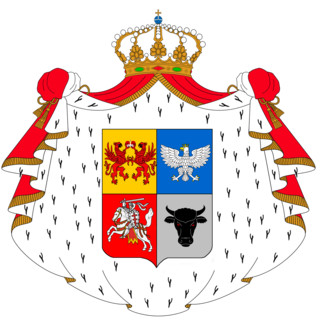
The House of Trubetskoy, is a Russian gentry family of Ruthenian stock and Lithuanian origin, like many other princely houses of Grand Duchy of Lithuania, later prominent in Russian history, science, and arts. They are descended from Algirdas's son Demetrius I Starshy. They used the Pogoń Litewska coat of arms and the Trubetsky coat of arms.

The Capitoline Museums are a group of art and archaeological museums in Piazza del Campidoglio, on top of the Capitoline Hill in Rome, Italy. The historic seats of the museums are Palazzo dei Conservatori and Palazzo Nuovo, facing on the central trapezoidal piazza in a plan conceived by Michelangelo in 1536 and executed over a period of more than 400 years.

Arturo Martini (1889–1947) was a leading Italian sculptor between World War I and II. He moved between a very vigorous classicism and modernism. He was associated with public sculpture in fascist Italy, but later renounced his medium altogether.

Prince Pyotr Petrovich Troubetzkoy (1822–1892) was a Russian diplomat, administrator and general.

Pietro Canonica was an Italian sculptor, painter, opera composer, professor of arts and senator for life.

Antonio d'Enrico, called Tanzio da Varallo, or simply il Tanzio was an Italian painter of the late-Mannerist or early Baroque period.
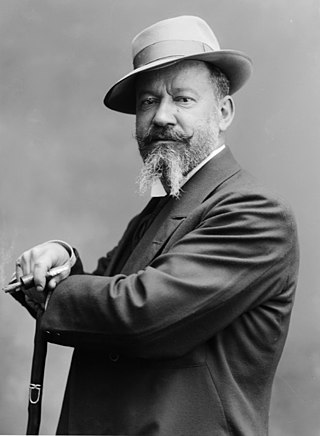
Raffaello Romanelli was an Italian sculptor, born in Florence, Italy.
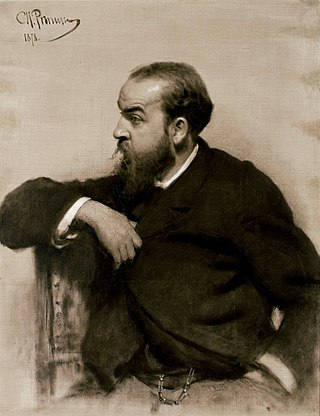
Rafail Sergeevich Levitsky was a Russian and Soviet genre, romantic, and impressionist artist who was an active participant in the Peredvizhniki (Itinerant) Movement.

Matthew Afanasyevich Chizhov (1838–1916) was a Russian sculptor.

Prince Nikolai Petrovitch Troubetzkoy was a Privy Counsellor and Chamberlain of the Russian Imperial Court. A relative of the Decembrist Prince Sergei Petrovich Troubetzkoy, he served as the President of the Moscow branch of the Russian Musical Society. For many years, he was a close aide of the composer Nikolai Rubinstein.

Daniele Ranzoni was an Italian painter of second half of the 19th century.
Giovanni Battista Ciolina was an Italian neo-impressionist and divisionist painter.
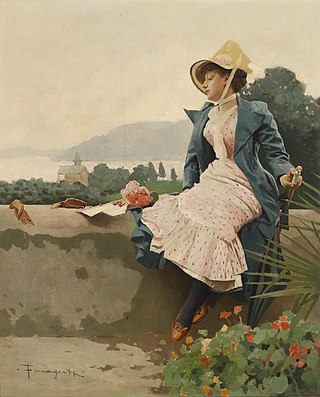
Arnaldo Ferraguti (1862-1925) was an Italian painter and illustrator, often painting genre subjects.
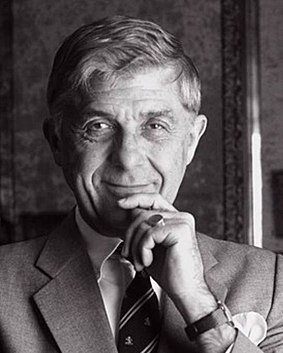
Alexis Sergeevich Troubetzkoy was an international author notable for his works on Russian history. He also served as the headmaster of Selwyn House School, Appleby College and the Toronto French School in Canada. He was born as a prince of the Trubetskoy family, to parents Prince Serge Grigorievich Troubetzkoy and Princess Lubov Alexeevna Obolensky. He taught at Bishop's College School and served in the Royal Canadian Navy for 8 years. He served as the executive director of the Tolstoy Foundation 1992–95. He also helped the International Orthodox Christian Charities gain the release of two of their workers taken hostage. His obituary in the Montreal Gazette mentioned among his published books Imperial Legend: the Disappearance of Tsar Alexander I; A brief history of the Crimean War; Arctic Obsession: the Lure of the Far North; The St. Petersburg Connection.































